
JAPANESE PRINTS
A MILLION QUESTIONS
TWO MILLION MYSTERIES
Ukiyo-e Prints浮世絵版画 |
|
Port Townsend, Washington |
|
WATANABE NOBUKAZU 渡辺延一 わたなべ.のぶかず 1874-1944 |
|
Publisher: Hasegawa Sonokichi 長谷川園吉 はせがわ.そのきち |
|
Date: 1895, 8th Month, 24th Day Meiji 27 明治27 |
|
Print Sizes: 14" x 9 1/4" each |
|
Condition: Good color, some slight soiling. The right hand panel shows a couple of small marks or stains. None of the prints is backed or connected. |
|
ORIGINALLY $310.00 NOW ON SALE FOR $210.00
LOWERED AGAIN TO $135.00 NO LONGER AVAILABLE! |
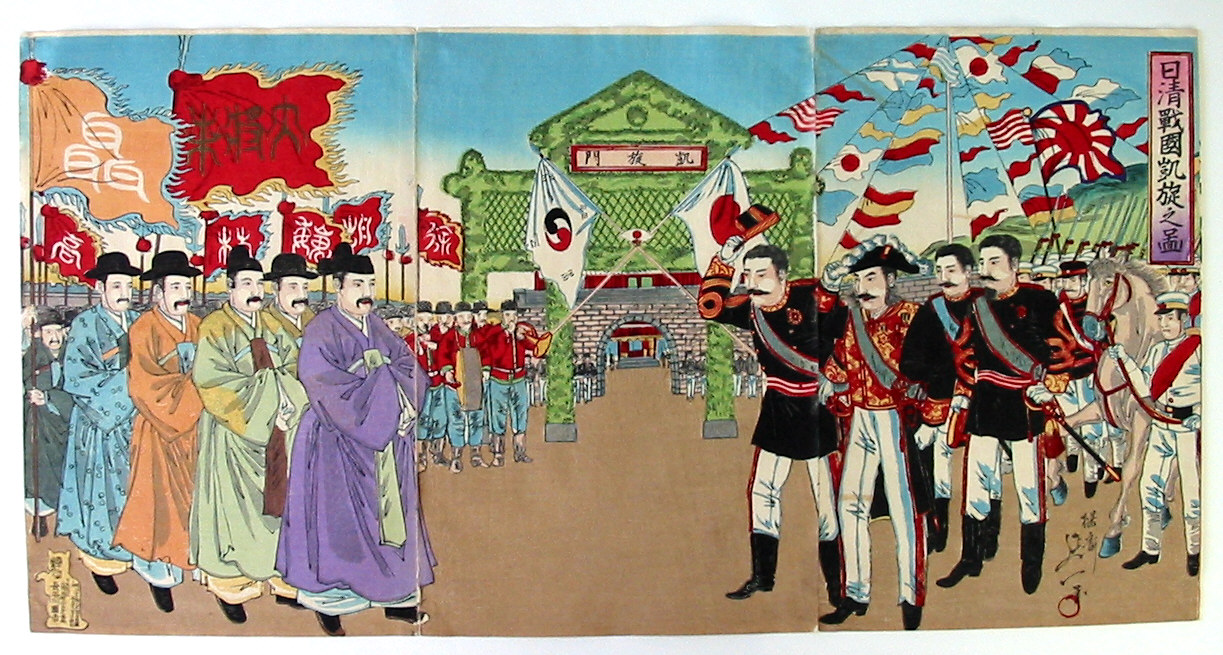 |
|
|
THE TITLE LEAVES NOTHING TO THE IMAGINATION |
||
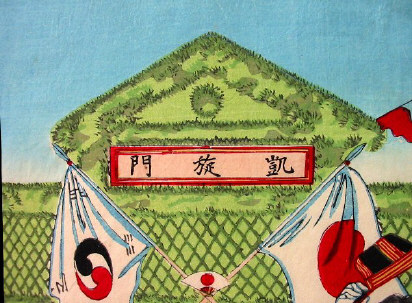 |
||
| TRIUMPHAL ARCH | ||
| 凱旋門 | ||
| がいせんもん | ||
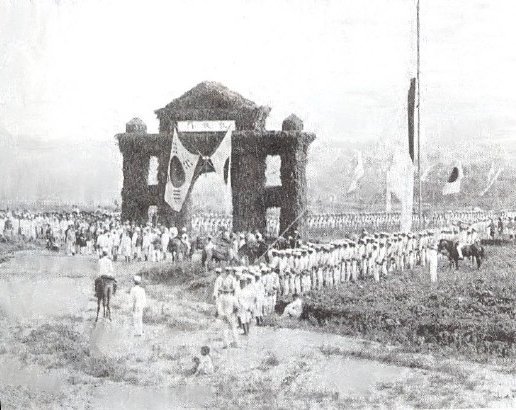 |
||
|
Above is a photographic record of one of the 'grassy' triumphal arches built to celebrate Japan's great victory over the Chinese. Is the Nobukazu print based on this particular arch? I don't know. The inscription reading "Triumphal Arch" is the same although it may not be easily read in this reproduction.
(This photograph is not being offered for sale.) |
|
|
BABES IN TOYLAND |
|
|
|
|
|
|
|
|
|
|
|
|
|
|
|
This detail shown above reminds me of the 1934 Laurel and Hardy film "Babes in Toyland" with its "March of the Wooden Soldiers" or even to some degree of Tchaikovsky's "Nutcracker Suite". Elaborate, staged and artificial.
While war is not a theatrical production it may sometimes seem that way if you aren't fighting in or threatened by its immediacy. (This, of course, is how it seemed prior to our exposure to near and real time events.) For the Japanese artists it was an opportunity to rev up the national sense of pride via a well organized propaganda machine.
Unlike the print on this page many of the more violent encounters of the Sino-Japanese War were never actually viewed by the artists who illustrated them. The bam, flash, kaboom and oomph of the battle front were not always part of the artist's assignment. Reports from the war would be telegraphed back to Tokyo with detailed accounts and the artists would reenact the scene from his studio. "Only a handful of printmakers went to the front to sketch... Most were less adventurous, content to be armchair artists following the news of the battle as it reached Tokyo, working from photographs if they were diligent but relying on imagination if information proved inadequate, as it usually did."*
*The World of the Meiji Print: Impressions of a New Civilization, by Julia Meech-Pekarik, Weatherhill, New York and Tokyo, 1986, p. 201. |
|
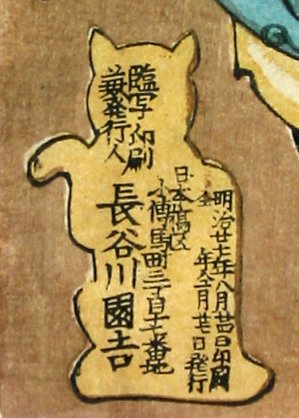
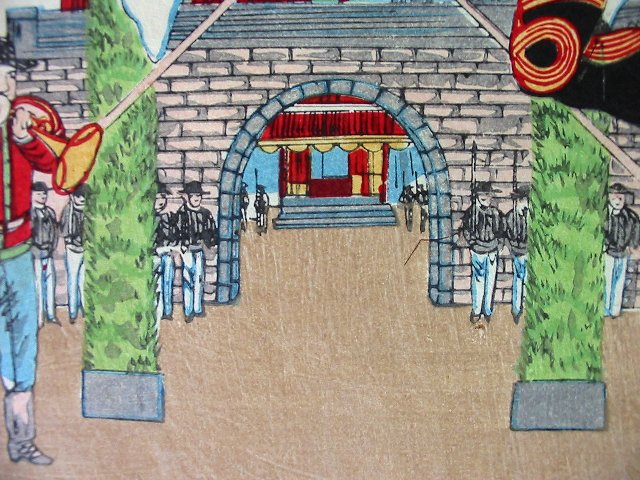
 HOME
HOME